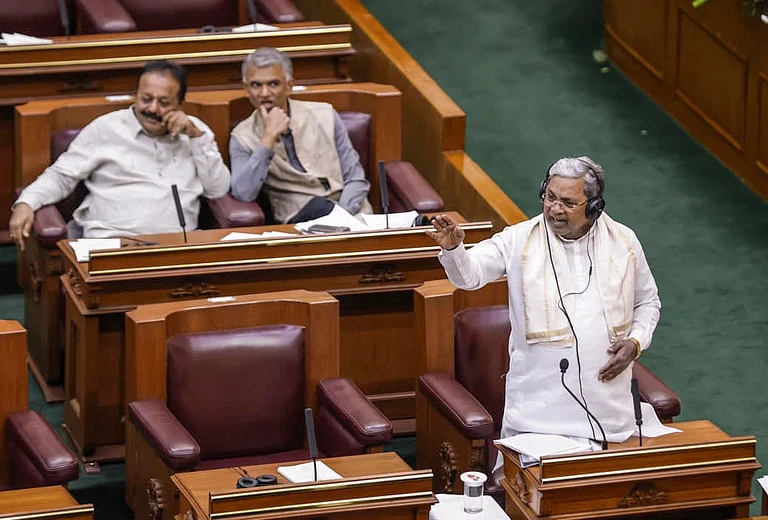Why does Aligarh Muslim University (AMU) have a portrait of Jinnah hanging in their campus? Were vegetarian students at AMU served food that was cooked in the same oil as non-veg food? Should the word ‘Muslim’ be dropped from the university name? Is AMU a minority institution? – The over 100-years old university has often faced such rhetorical questions ever since it was established as the Muhammadan Anglo-Oriental (MOA) College in 1875 by Sir Syed Ahmad Khan.
The purpose of its establishment was to popularise modern British education among Muslim society. But the very existence of the university and its status as a ‘minority institution’ was challenged in 1965. After the then Manmohan Singh-led UPA government backed the institution and its minority status in 2006, it was assumed that the worst was over – until the Narendra Modi-led NDA government revived the debate in 2016.
The legal dispute over AMU’s minority status
The legal dispute over AMU’s minority status dates back to 1965 when amendments to the Aligarh Muslim University Act, 1920, deprived the institute of its role as the university’s sole governing body. The body instead consisted of members who were appointed by the President. Legal experts point out that the problem began from here, when Muslims were not given administrative powers within the institution. The power of the Court (Aligarh’s sole governing body) was reduced to merely an advisory body and non-minorities were allowed to be its members, says Sajid Bukhari, a legal practitioner. Subsequent legal judgments further upheld these amendments that stripped the administrative powers from Muslims – instead of protecting it, Bukhari says.
One such judgement was given in the 1968 Azeez Basha vs Union of India case.
The AMU, deciding to contest these amendments and reiterate that they had the right to administer institutions, filed a petition in 1967, arguing that Muslims had established the AMU and therefore, had the right to manage it. In response to the petition, the Supreme Court held in 1968 that the university is not a minority educational institution protected under the Indian Constitution – a judgement that sent ripples across the Muslim community.
The current BJP-led NDA government has been relying on this judgement to make its case that AMU is not a minority institution.
But the judgement itself is contradictory, says Bukhari. While pronouncing the order in the Azeez Basha case, the Supreme Court recognised that Muslims can establish a minority university; Muslims collected funds with great difficulty; built infrastructure and negotiated for many years to establish AMU but then eventually held that while the university was allowed to be established through the 1920 Act, it did not mean that the degrees issued by them would be backed by the government.
Hence, the court emphasised, AMU was established through a central Act to ensure the government’s recognition of its degrees. “So while the Act may have been passed as a result of the efforts of the Muslim minority, it does not imply that the University, under the 1920 Act, was established by the Muslim minority,” the SC ruled.
Both the Azeez Basha case and the current government’s arguments are not only inconsistent with the purpose of Article 30(1) of the constitution (right of minorities to establish and administer educational institutions) but also against many Supreme Court judgements, laments Bukhari.
Larger repercussions of legal dispute over AMU
During the recent hearings in the Supreme Court, Senior Advocate Kapil Sibal, representing AMU, relied on a speech made by former Education Minister M.C Chagla delivered on 3 September 1965 which pointed towards the beginnings of AMU. It clarified that AMU was established and administered by minorities. However, the Union Government relied on the 1968 judgement and argued that it had held that MAO “surrendered” its minority status to the British government.
It is not just AMU whose minority status is being contested. In 2018, the Centre filed an affidavit with the Delhi High Court opposing the order of the National Commission for Minority Educational Institutions that had declared Jamia Millia Islamia a religious minority institution. Here too, the Centre relied on the Azeez Basha judgement.
"In case of an unfavourable judgement for AMU Minority Status in the Supreme Court, it could potentially set a precedent affecting other minority institutions,” says M Huzaifa, Student of Law, Aligarh Muslim University.
Huzaifa has been studying at AMU since 2019. “AMU is our sanctuary, nurturing growth, reform, and empowerment,” he says, adding that if the institute loses its minority status, the repercussions would extend beyond academia, further deepening socio-economic disparities, where Muslims languish at the lowest rung.
These disparities were also revealed by the latest All India Survey of Higher Education (AISHE). It showed that the number of Muslim students (18-23 years) enrolled in higher education fell by more than 8.5 per cent between 2019 and 2021. Uttar Pradesh alone accounted for 16 per cent decline in enrolment of Muslims while Delhi accounted for almost 20 per cent. “Muslims are below even scheduled castes in terms of education. These are facts,” Adv. Kapil Sabil too reiterated while arguing in court, adding that they are not empowered enough and the only way to empower them is through education.
Institutes like AMU provide education at minimum expenses to vulnerable sections of the population, say activists, reiterating that without minority status, they would be deprived of access to a prominent educational institute amid a ‘hostile’ environment in the country for vulnerable sections. “In the face of Islamophobia and discriminatory policies like the Karnataka Hijab Ban, it's a call for Muslims to protect educational and cultural autonomy, defending our dignity against the threat of nationalist majoritarianism,” says Huzaifa.


























